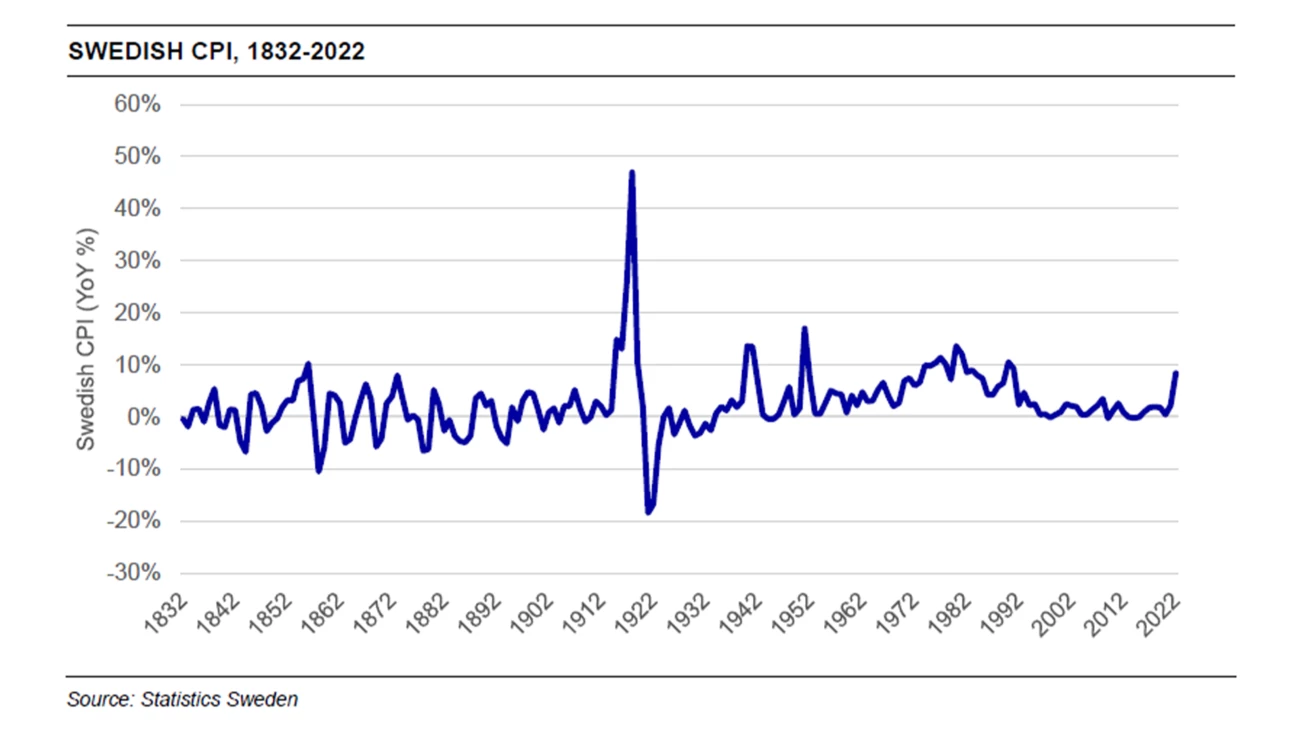VS: How are prices collected and calculated? Are Statistics Sweden employees running from store to store or scouring the internet noting down prices? Do, for example, retailers send in price lists? Does it differ depending on component type?
JE: Historically that is exactly what we did – our staff visiting stores and documenting prices with a notepad and a pencil. But not so much anymore, as we have evolved with society and the economy. We shop more online, and we use vouchers and offers when we do so. Over the past ten years, we have shifted from having over 100 colleagues manually checking prices in stores to the greater share of our data collection now being digital. This is both through web scraping and manually. And our biggest digital collection method today is direct data transfer from companies.
We do this for example for food, consumer electronics and quite a few services, such as rail travel and package holidays. As you know, online prices in these categories are very dynamic and can change daily or even intraday. This makes it helpful for us to receive actual transaction prices monthly, from which we can calculate average prices. These averages become a net, which includes the impact from any discounts or campaigns. Historically, we might have included price observations from goods on the shelf which had not been sold, or which were subsequently sold at a discount. So the accuracy of our price measurements has improved.
We collect samples for pricing data, but to a growing extent we actually collect all transaction pricing data from companies. This is, for example, the case for rail travel and package holidays. In 2011, we had no digital data collection, and our total price data sample was about 25,000 products. Today, sample size has become almost a philosophical issue to define, as we measure vast numbers of actual transaction prices collected digitally. We are talking about millions. But if we try to compare with the historical definition of a sample, it is currently between 150,000 and 200,000 products and services.
VS: The Consumer Price Index Board is responsible for handling issues regarding CPI calculations. Can you share a bit more in detail what this entails? Who sits on this board? What types of issues are typically discussed? Changes to the CPI methodology? Something else?
JE: The board was originally formed in the 1950s, when the current format for the consumer price index was introduced. Historically, the board had authority over the index definition, and any proposed methodological changes or adjustments had to be approved by it. But since 2016 the board has only an advisory function, and the final decision on changes lies with us at Statistics Sweden. The board has members from relevant authorities (users of the CPIs), such as the Social Insurance Agency, the Pension Authority, the National Board of Housing, Building and Planning, the Central Bank, the Swedish Consumer Agency and the Ministry of Finance. There are also members from academia, with specialist knowledge mainly in microeconomics.
An example of a topic discussed by the board was during the COVID-19 pandemic, when some goods and services could not be consumed while social distancing initiatives were in effect. How then to measure prices for package holidays when air travel was not possible, or traditional shopping when it was not possible to visit physical stores? We prepared a proposal for the board, taking into account among other things how car pricing was handled during the major Icelandic volcano eruption and subsequent ash cloud in 2010, which prevented car deliveries to Iceland for an extended period. Another example was how to treat the first state electricity price support to households in the winter of 2021.
For any proposed major changes to our CPIs, we ask for input from the board. All documentation is published and publicly available online, so there is high transparency for what is being proposed and why. The process is that Statistics Sweden submits a proposal, typically with several options to choose from, to the board. It is discussed, and the opinion of the board is noted. Any precedents are reviewed and considered. When needed, the governmental CPI review from 1999 is consulted. It is effectively our manual, although it is quite theoretical. And then Statistics Sweden decides which option to choose, taking into account all input.
VS: To what level of detail are components of the CPI measured? To the level of, for example, the price of a litre of milk or is it on a more aggregated level? Can you give some examples of any unexpected components in the CPI, which people might not realise are in there?
JE: Our basket for the CPI is originally based on our national accounts, specifically household consumption. It is meant to reflect total private consumption, and we have defined the sample for our basket to mirror this as closely as possible. To give you a few less obvious components, I could mention dog vaccinations, birthday greeting cards, and we also include the passport application fee payable to the police.
VS: Housing is a very significant expenditure for most consumers – how is the housing cost estimated in Swedish CPIs? Different from other countries? Are there potentially better ways of estimating it?
JE: Housing is the biggest category in the CPI basket, accounting for about 25% of spending. It includes electricity and heating costs, rents and household services such as cleaning and waste collection. We also include, for example, the price of wood for renovations and maintenance. The prices for homes and for these services are straightforward, and we monitor these on a monthly basis. In our Swedish CPI, we also measure interest costs. This item breaks into actual interest payments, and the level of indebtedness. More borrowing and higher interest rates raise the costs, and vice versa. We have good in-house statistics on average mortgage interest rates, and for property prices we rely on our own index for houses and the Valueguard Index for flats. The level of equity and debt in a home can be heavily influenced by the timing of when it was bought by its current owner, so our datapoints for house prices when estimating housing costs are in effect calculated as a moving average.
Our approach to estimate housing costs is not so common among other countries. Canada and Iceland do it in a similar way. A more common approach is to use a rent equivalent proxy for housing costs. This is based on prevailing market rents for housing. As rents also reflect current interest rate levels, the outcomes should be similar to our formula for estimating housing costs. A third way, which we see for example in Australia and New Zealand, is using the net purchase price principle. Under this approach, homes are treated as any other purchased good. When it is purchased, it is also consumed. Hence, you only monitor prices for new homes and for expansions. Coming back to the EU's harmonised CPI, the HICP, it has been decided that it will use this net purchase price principle to estimate housing costs.
What various interested parties might think is a better or worse method usually matters less than what can successfully be implemented. The national statistics agencies tend to be pragmatic. In Sweden, residential rent levels are heavily regulated, and there is not really any functioning market with sufficient breadth, depth or liquidity from which to draw any observations about market rents or rent equivalents. In reality, market structures, regulations and national peculiarities will strongly influence which is considered the best method for measuring housing costs in each country. But that is not to say that a particular method gives bad or unreliable results.
VS: Sweden is a small, open economy with a high level of imports. How much consideration is given to what other countries are doing with regards to CPI calculation? For example, are countries in the EU striving for similar frameworks for measuring inflation, or does every country do its own thing?
JE: Ultimately, each country has tended to opt for the methods and approaches that can give the best results from the available data. In Sweden, Statistics Sweden has developed the CPI as the best tool for our stakeholders. The central bank has concluded that it is the best tool for it to pursue monetary policy and define its goals as well, albeit with the proviso that it uses the adjusted CPIF, which keeps the mortgage interest rate constant. It most recently reaffirmed this choice in a review it did in 2017. But from the point of view of the ECB, mandated to run monetary policy in the eurozone, it is necessary to use a harmonised measure of inflation which is applicable throughout the currency area.
On the global level, the ILO has a universal CPI manual. Virtually every country in the world is relying on this and seeks guidance from it when complicated methodological issues arise. This is a driver of global harmonisation. But it often contains several options to choose between, such as in the case of housing costs. And countries can choose whichever of these 'endorsed' options suit their needs and circumstances best. When looking at Sweden's inflation rate, our CPI may be the best available national measure of inflation, while the HICP may be the best available inflation measure to be applied for full comparability between different countries within the EU.


